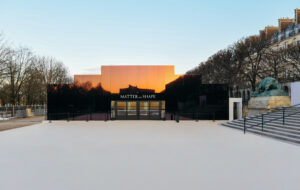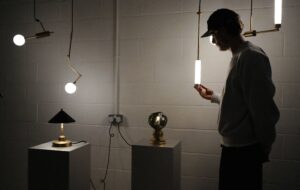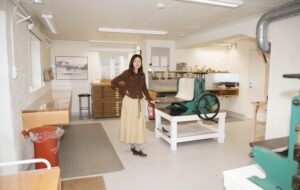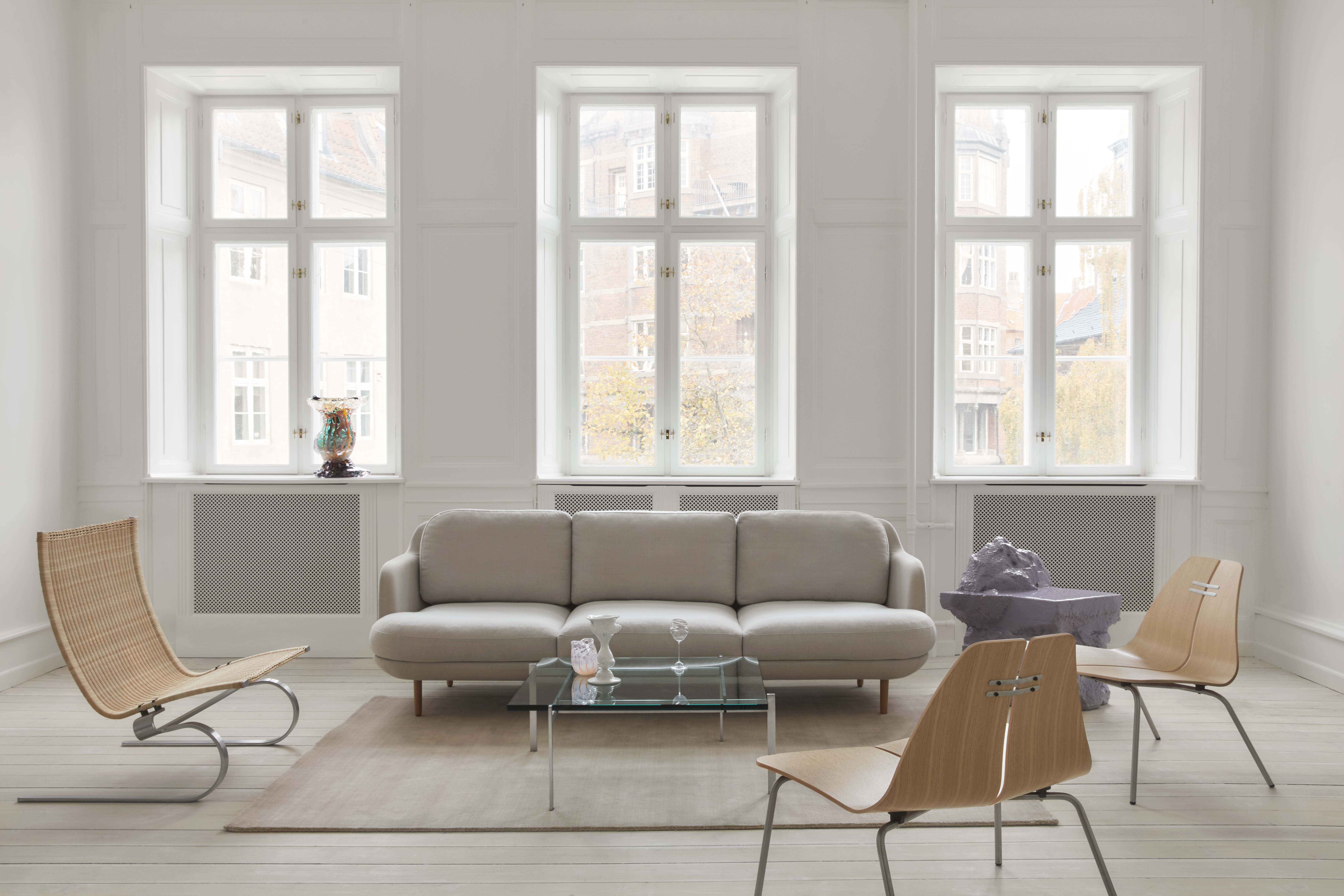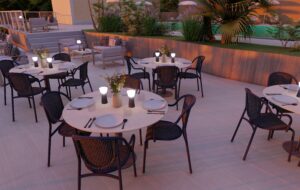


words Kieran Long
I am in Shanghai drinking and chatting with a bunch of European designers and journalists. Chinese gallerist Pearl Lam has invited us all here to make connections – between East and West, and between art and design.
Coinciding with the opening of the Shanghai Biennale in September, the event is part of a marketing push for contemporary Chinese cultural output, and a PR exercise in raising the profile of design in China. It’s a strange experience, being in the country we are told will be the future of the global economy, yet with the same people you could speak to in Milan, London or any number of other furniture fairs.
The immaculate Lam has three spaces in Shanghai, but spends much of her time in London. She has a vested interest in making connections between Eastern and Western creative cultures, and has invited not just designers but other big players in the effort to connect China with the rest of the cultural world. Philip Dodd, former head of London’s Institute of Contemporary Arts and now chair of the Made in China agency, is here, as are curators from London’s Victoria & Albert Museum and the Pompidou in Paris, and probably the most prominent collector of Chinese art in the world, the Swiss Uli Sigg.
The marketing of Chinese culture is a relatively new undertaking. In the stratospheric growth of its economy and the urbanisation of the former agrarian communist country, art, design and other such luxuries had minimal importance. But with the exponential rise of the Chinese middle class, such luxuries have had a corresponding ascent. Works by the most important Chinese contemporary artists can now reach the magical $1 million (£534,000) mark at auction, and the first night of the Shanghai Biennale resembled the January sales on Oxford Street, with thousands of art fans packing the halls at the 1930s Shanghai Art Museum within minutes of the doors opening.
It’s a huge emerging market, and Lam seems keen to bring design into the mix. Her attitude is that “it’s all just creativity”. She wants borders to be transgressed, both geographically and culturally, and her attitude typifies the simplistic positivity of boom-time China. Lam is very wealthy, and has invested a lot of money commissioning works from around 50 designers and artists from China and the West to create what she calls “functional and non-functional pieces of art”. Designers were asked to make non-functional pieces, and artists functional ones. Could Shanghai be the melting pot that finally erases distinctions between disciplines, and gives designers a way into the hugely lucrative art auction houses?
Designers from Europe, such as Ross Lovegrove, Michael Young, Maarten Baas, and some younger names such as Wokmedia and FredriksonStallard, were invited to China to work with local producers in the creation of works for the exhibition Crossovers: Beyond Art and Design, at Lam’s Contrasts Gallery. Most of them tended towards the lavish – London-based Todd Bracher’s 3m-long carved lump of black stone, or Chinese artist Yin Yanhua’s marble light bulbs being pretty typical.
This process culminated in an opening, coinciding with the Shanghai Biennale, where Western designers stood side-by-side with Chinese artists to say how incredible Lam was, and what an unbelievable opportunity they had had. Many had not even seen the objects that were on display, a number of which were made by Chinese fabricators just days before the opening. But despite this slightly ad hoc feel, there was huge pomp, with ribbons cut by ambassadors, and a suckling pig roasted and brought out on a tray.
To add some depth to the proceedings, Lam also organised a symposium, intended to look at issues surrounding the Chinese art market, and the question, so dear to her heart, of why distinctions between artists and designers endure. Her motivation to erase these boundaries has its justification in the history of Chinese design and art, particularly attitudes to creativity found in 15th- and 16th-century artworks and objects. The former director of research for the Shanghai Art Museum, Li Xu, was on hand during the symposium to provide the explanation for this blurring of disciplinary boundaries. The Chinese figure of the “wen ren”, the polymathic scholar artist, is at the root of Chinese visual culture, Li explained. “Throughout history, Western society has laid emphasis on the specialised division of labour, so no social system for cultivating broad and comprehensive talent was ever fostered,” he says. “Differing from the Western concept of an intellectual, Chinese wen ren were not only erudite scholars; many were also talented artists and designers.” Li gives as an example the highly sophisticated tradition of teapot design by wen ren scholars. Sometimes exuberantly formal, they were also often inscribed with poetry written by the wen ren. Creating a teapot was one of the best ways to disseminate a poem among other members of the cultural elite, an alternative form of publication. Li says: “The creation of a teapot saw the convergence of a variety of disciplines, including modelling, mud colouring, inscription, poetry, calligraphy, painting, sculpture and seal cutting.”
At the Contrasts Gallery, this is taken as the accepted history of Chinese culture, and it appears to make Lam’s curation of this show more logical. There were some dissenting voices, though. Hongxing Zhang, head of the Chinese department at the V&A, argued that while this culture undoubtedly existed, its branding is partly a modern conception. “This literati culture is a historical concept. The culture began 2,000 years ago, but it matured only in the 15th and 16th centuries in the Ming dynasty, which was equivalent to the European Renaissance. Just to look at calligraphy, before the 12th century there were big [disciplinary] distinctions, and even in the 16th and 17th centuries, painting is considered very different from architecture and different from making sculpture.”
Hongxing says that this Chinese renaissance was also the birth of consumer culture in the country, creating a market for objects such as teapots and other art objects that had never existed before. Consumer culture is certainly something that contemporary China is learning about very quickly. Its role as the manufactory of the world and the recent history of communism means the concept of design as an authored discipline is relatively new in China. For Hongxing, this is a key distinction between a Chinese identity in design and a Western one: “In the West, design evolved from the industrial revolution. But Chinese manufacturing is made for the global market – they don’t need a designer.”
In some respects, what the Crossovers exhibition reveals is that contemporary designers are indeed not Renaissance men (but they are predominantly male). In fact, the cheap conceptualism on show makes one think that disciplinary boundaries should be reinstated as a matter of urgency.
Perhaps the most prominent Western designer in the collection was Lovegrove, whose response to the open brief was to make a sculpture called Jadepod – an iPod-like sculpture made out of small blocks of jade bonded together and then carved. For added bling, the lead of the iPod is a burnished gold, and acts as a stand for the 83cm object. It is barely worth the effort to describe how poor a statement this is, and Lovegrove’s own “artist’s statement” doesn’t help: “I have identified an iconographic contemporary object that is technologically advanced and of our time … I have rendered it irrelevant in functional terms as its scale, weight and material make it a static artifact.” The work operates within vague paradigms of mass manufacture and specificity, territory that was comprehensively covered by artists 50 years ago.
Other big names were equally disappointing. Jurgen Bey’s installation was poor, and even he seemed slightly embarrassed about the sagging paper sculptures hanging just inside the door of the gallery. I could go on – Young presented a group of lamp-shaped silver objects that he claims should be best observed “placed on the black desert sand in south-east Iceland where I have a home”. They all should have thought more about what would have been most interesting to place in a gallery in Shanghai.
Easily the most compelling object in the exhibition was by one of Lam’s star Chinese artists, Shao Fan, whose riffs on Ming Dynasty styles are hit and miss, but sometimes wonderful. The piece here, Ming Ladder, was a calm and intense reflection on the history of Chinese objects – a diminishing ladder carved from dark, “chicken wing” wood.
One has to question the motivation for bringing all of these designers here for this show. When I asked Deyan Sudjic, director of the Design Museum in London, about the blurring of boundaries between design and art, he said that the only difference now was in price. “I mean, why is a Rietveld chair worth more than a Rietveld house, but much less than a Mondrian? I don’t know – portability, investment perhaps, but there is definitely a cultural hierarchy,” he says. “A market has been created [for design objects].”
Lam’s strategy seems to be to try to close this financial gap. The conceptual framework of the wen ren suits this aim, but is not borne out in the quality of the work on display. Most of the objects do not deserve to be shown in a gallery, much less held up as a victory of trans-disciplinary exchange. The Crossovers collection is full of objects that look like something designers would do on their holidays, if they had a lot of money. And not in a good way.

